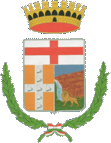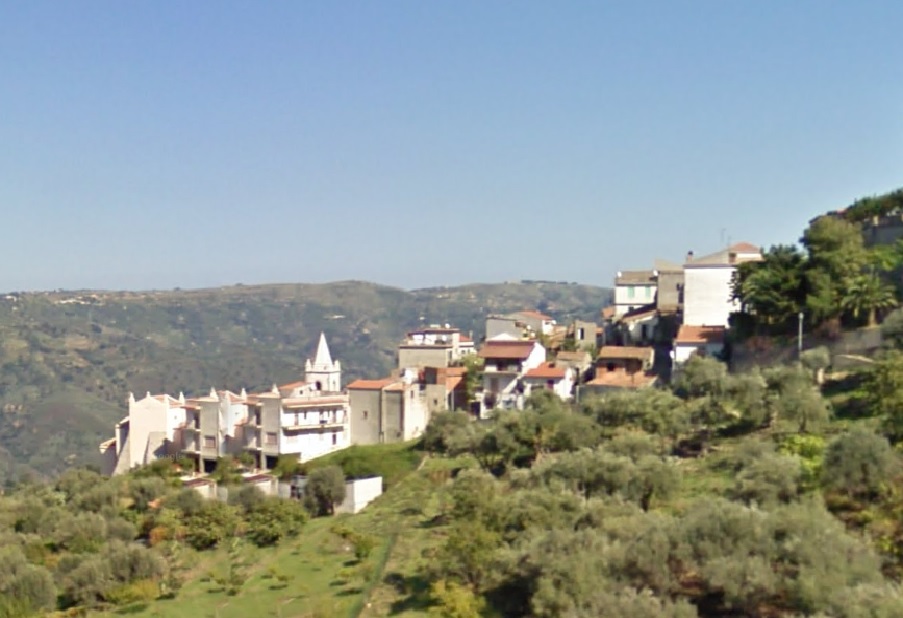

A circa centoventi chilometri da Messina, sui Nebrodi settentrionali e sull'estremo versante sinistro della fiumara di Zappulla, sorge Capri Leone e appartiene all'area dei Nebrodi, il cui centro collinare è collocato a 400 m s.l.m., mentre nella parte pianeggiante si trova la popolosa frazione di Rocca di Capri Leone, di recente istituzione. Gli abitanti del Comune di Capri Leone, sono denominati come "caprileonesi", ma in Siciliano quelli che abitano a Capri Leone vengono detti "crapitani"; quelli di Rocca, invece, "ruccoti".
Il nome del paese sembra derivare dal greco Κάπρος, cioè cinghiale che da sempre ha popolato il suo territorio come testimoniano le antiche monete ritrovate. Inoltre nella zona esisteva una città romana denominata “Solusapre” cioè terra del cinghiale.
Il territorio del centro di Capri Leone indica la parte storica del paese. In esso sono ubicate le antiche chiese dell'Annunziata (che conserva un campanile settecentesco), di San Costantino, di Sant'Antonio, di San Rocco. Di indubbio rilievo è soprattutto la fontana del "Leone" che rappresenta il vero simbolo di tutto il Comune; tale fontana del "Leone" ha contribuito a dare origine ad una parte del nome del paese sin dal 1862. Fino a quella data, infatti, il Comune era semplicemente denominato "Capri". L''appositivo "Leone" fu aggiunto per distinguere il paese dalla più nota isola campana.
Il 4 luglio 1299 pare che il territorio dove si svolse la storica battaglia tra Federico III e Giovanni II d'Aragona fosse in località Crapijusu, in prossimità del Torrente Zappulla. Lo stesso territorio ospitò la famiglia Alojsio, Baroni del Regio Demanio, passò, poi, agli Aragona, nobile famiglia messinese, Filangeri equindi al signorotto Angelloto di Larcan.
Il 4 luglio 1299 avvenne la battaglia tra Federico III e Giovanni II d'Aragona; la flotta siciliana sotto il comando del primo combatté contro l'aragonese; si ritiene che il campo di battaglia fosse proprio in prossimità del torrente Zappulla. Dal 1282 al 1342 Crapisusu fu territorio della famiglia, Alojsio di origine francese. Dal 1342 al 1377, unitamente a Mirto, Frazzanò e S. Marco,alla famiglia Filangeri. In seguito Capri, con Mirto e Fitalia, appartennero al signore di San Fratello, Angellotto di Larcan ma anche ai Branciforti e ai Cardona.
Il Santo Patrono di Capri Leone è San Costantino; della frazione Rocca, invece, il Santo Patrono è la Madonna del Rosario.
Tra i monumenti che impreziosiscono il paese particolare rilievo rivestono le chiese.
La Chiesa Madre, costruita nel medioevo, mostra una maestosa torre campanaria nella struttura dell'epoca e un ricco portale scolpito, dalle origini settecentesche.
La Chiesa di San Costantino, dalla bella facciata e dagli interni decorati, custodisce tele di ricercata fattura, sculture ben delineate e un pregevolissimo quadro d'altare, racchiuso entro una preziosa incorniciatura, di origine seicentesca e raffigurante Il Battesimo dell'Imperatoree vi si trova anche una statua in gesso raffigurante il patrono san Costantino seduto sul trono tenuto da quattro angeli.
La Chiesa dell'Annunziata ospita anch'essa un campanile del Settecento. L'altare maggiore, in marmo rosso, accoglie la bellissima statua della B.V. Annunziata di Antonello Gagini (1478-1536), essa fu una delle ultime opere dello scultore, all'interno, inoltre, si possono notare alcuni affreschi.
Ma anche altre opere:
Palazzo Cupane: Palazzo baronale in ottimo stato di conservazione, fu edificato nella metà del XIX secolo e dal 1989 è vincolato dalla Soprintendenza dei BB.CC. e AA.
Le Fontane: La fontana dei Leoni nell’omonima piazza - “Lu liùni”, “U canaleddu”, “Paiària” e a “Funtana di Crapi”, nella parte bassa del paese. La loro acqua è potabile.
Parco Urbano "Peppino Grasso" in memoria dello stesso cavaliere che ha ricoperto la carica di primo cittadino di Capri Leone.
(English)
About 120 km from Messina, on the northern Nebrodi and on the extreme left side of the Zappulla river, rises Capri Leone belonging to the Nebrodi area, whose hilly center is located at 400 m. at sea level , while in the flat part there is the populous village of Rocca di Carprileone, recently estabilished.
The inhabitants of the town of Capri Leone, are called "caprileonesi", but in Sicilian the ones who live in Capri Leone are called "crapitani"; the ones of Rocca, instead, "ruccoti".
The name of the town seems deriving from the Greek " Κάπρος ", that is wild-boar that has always populated its territory as evidenced by the ancient coins found.
Besides, in this area there was a Roman town, called "Solusapre", that is the land of wild boar.
The territory of the center of Capri Leone indicates the historical part of the town. There are located the ancient churches of the “Annunziata”(which retains an 18th century bell-tower), of St. Constantine, of St Anthony, of St. Rocco.
Of undoubted importance is above all the fountain of the "Lion" (Leone), that represents the true symbol of the whole town; this fountain of the "Leone" has helped to give an origin to a part of the name of the town, since 1862. Until this date, in fact, the town was generally denominated "Capri".
The name "Leone" was added to distinguish the town from the more famous island of Campania.
On the 4th of July in 1299 It seems that the territory where the battle among Frederick III and John II of Aragon took place was in Caprijusu, near the Zappulla stream.
The same territory hosted the Alojsio family, Barons of the “Regio Demanio”, then passed to the Aragona, noble Messina family, Filangeri and then to the lord Angelloto of Larcan.
The battle between Frederick III and John II of Aragon took place on 4 July 1299; the Sicilian fleet under the command of the former (Frederic III) fought against the Aragonese ; it is believed that the battlefield was right next to the Zappulla stream. From1282 to 1392, Caprisusu was an Aloisios family's territory, of French origin. From 1342 to 1377, together with Mirto, Fitalia, Frazzanò and S. Marco, it belonged to the Filangeri family. Afterwards Capri, with Mirto and Fitalia, belonged to the lord of St. Fratello, Angellotto of Larcan, but also to the Branciforti and to the Cardona.
Capri Leone's Patron Saint is St. Constantine; the one of the hamlet of Rocca, instead, is the Virgin of the Rosary.
Among the monuments that embellish the town, churches are particularly remarkable.
The Mother Church, built in the Middle Ages, has a majestic bell-tower in the structure of the time and a rich carved portal from the 18th century
St. Constantine's Church, with its beautiful façade and decorated interiors, houses canvases of refined workmanship, well-defined sculpture and an excellent altar painting, contained in a very valuable frame of XVII century origin, representing the Baptism of the Emperor. There is also a plaster statue depicting the patron St. Constantine seating on the throne held by four angels.
The Church of the “Annunziata” also presents a XVIII century bell tower high altar, in red marble, houses the beautiful statue of B.V. Annunziata by Antonello Gagini's (1478-1536) ; it was one the last works of the sculptor; inside some frescoes can be admired.
Other works
Palazzo Cupane: Baronal palace in a very good condition, it was built in the mid XIX th century and since 1989 is bound by the Superintendency of BB.CC. e AA.
The fountains: the Lions fountain in the square - "Lu Liuni", "U canaleddu", "Paiaria" and "a funtana di Crapi" in the lower part of the town. Their water is drinkable.
The Urban Park "Peppino Grasso" in memory of the knight him-self who held the position of the mayor of Capri Leone.